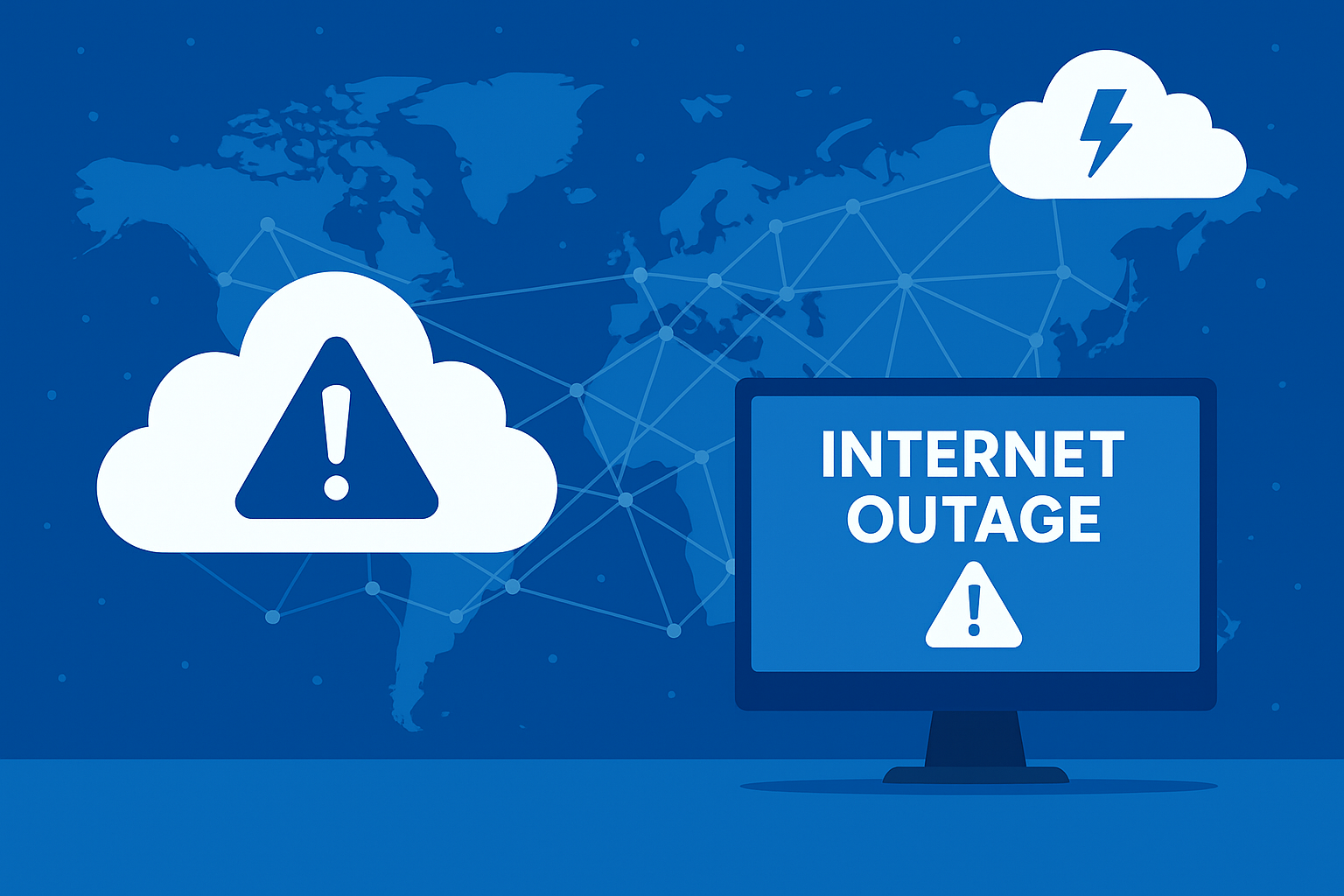When the Internet’s Engine Stalls
30 Oct

Introduction
On the 20th of October, a big chunk of the internet went down. Not your Wi-Fi, not your laptop — the internet itself.
AWS (Amazon Web Services), one of the largest cloud providers in the world, had an outage that took down everything from Fortnite and Snapchat to banking apps and even smart devices. And it made one thing painfully obvious: the web isn’t as “everywhere” as we like to think it is. It’s become pretty centralised. And that could be a problem.
The Internet Has a Single Point of Failure
Most people think of “the cloud” as this magical, floating thing that lives everywhere. It doesn’t. A major chunk of it lives in data centres — real buildings with real computers — owned by a few massive companies like Amazon, Google, and Microsoft.
When one of those has a bad day, the ripple effect is huge. It’s a bit like everyone deciding to get their electricity from the same provider. When they go down, everyone goes down. (Loadshedding, anyone?)
We Saw It First-Hand
We’ve spoken a lot lately about how businesses rely on tools they don’t really understand. During an audit for one of our engineering clients, we found that 30% of their Microsoft 365 licences were redundant. They were paying for accounts that didn’t need to exist — essentially the digital equivalent of leaving the lights on in an empty room.
Now scale that idea up. Imagine the whole internet built that way — systems relying on systems, all stacked on top of each other. When one layer cracks, the rest start to wobble.
Convenience Comes with a Cost
The cloud is amazing. It makes life easier, faster, and cheaper. You don’t need to buy servers or maintain hardware. But convenience always comes with a trade-off — control.
When everything lives under one provider, you gain efficiency at the cost of resilience. So when AWS goes down, it’s not just their problem. It’s everyone’s problem.
You don’t need to panic or migrate everything overnight, but it’s worth asking a few honest questions:
- What happens if the tools we use every day go offline for a few hours?
- Do we have any form of backup or redundancy?
- Are our critical systems all sitting on the same platform?
- Do we even know what we’re relying on?
The point isn’t to spread fear, but awareness. You can’t prepare for what you don’t understand.
The Bigger Picture
The internet was built to be decentralised — a network of smaller nodes working together so that no single failure could take it down. But over time, convenience and cost-cutting shifted us toward a few mega-clouds that now hold most of the world’s digital life.
That’s great when it works. But when it doesn’t… well, you saw it. You don’t have to ditch the cloud, but you should understand your dependencies. Know what’s critical, what’s optional, and what can break without breaking you. Because the next time the internet’s engine stalls, you’ll want to be the business that keeps rolling.



Recent Comments